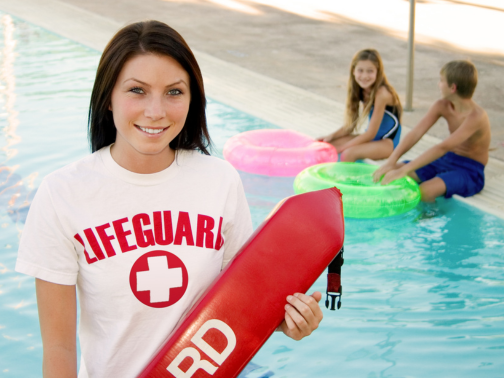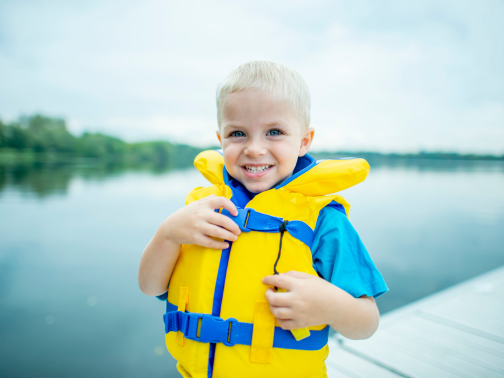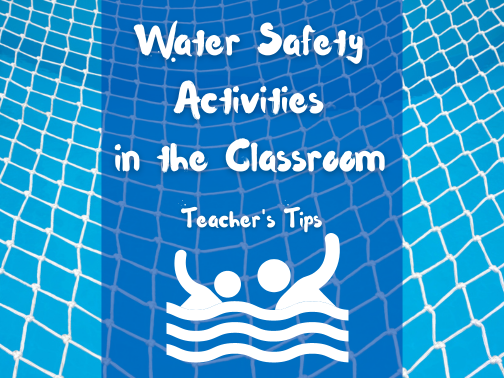Contents
Toggle
Meet David De’ Ath, founder, editor, and writer at Wonderful World English. With his extensive background as an English teacher, David provides valuable insights and practical tips on ESL for students and teachers alike.
No matter what, safety comes first, and it is vital for teachers to do their best to instill an awareness of this in their students.
Whether it’s being safe on the road or not playing with matches, many important subjects need to be covered in a child’s education and upbringing.
Today, we will look at water safety, its importance, and some fun and educational activities that teachers can offer their students.
As teachers who care about our students, we are responsible for providing them with essential knowledge and skills to stay safe around water.
There are several great activities on water safety that teachers can include within their classrooms. It’s first good to discuss water safety and allow students to comprehend and digest its importance. Some useful activities include class presentations, quizzes, role-plays, educational videos, and inviting guest speakers.
I am an experienced teacher who has taught classes on the importance of water safety before, and today we will explore some engaging ways to teach this subject in the classroom.
By learning about safety around water, students will be given the tools they need to make better decisions and prevent accidents from happening.
If done effectively, these activities could stay with a student forever.
Without further adieu, let’s dive in (after class, of course)!

Teaching Water Safety in the Classroom
A classroom is a controlled and supervised environment perfect for learning about water safety.
Students can develop valuable skills and knowledge that will help them stay safe around bodies of water such as swimming pools, lakes, rivers, and oceans.
By teaching them from a young age, responsible adults can establish a foundation of water that students can build upon as they develop and grow.
Not only do water safety activities promote health and fitness, they also improve cognition and problem-solving skills.
Students should be made aware of potential hazards and taught important skills such as floating treading water, as well as basic swimming strokes.
By building their confidence and responsibility around water, students will be much better equipped to stay safe in a variety of settings.
Water safety can be included within science lessons by incorporating safety rules with scientific knowledge relating to the properties of water and the buoyancy of objects, for example.
Teachers can also introduce water-based games in P.E. classes, especially swimming sessions, or they can simply devote a period of time completely dedicated to water safety.
Now let’s look at some great activities for water safety in the classroom:
1. Class Discussions
The first thing teachers should do in the classroom when teaching water safety is to discuss what it means to be safe around water.
Students should be very clear on the importance of these key rules:
- Never swim alone
- Always wear appropriate safety gear
- Don’t swim in the deep end
- No running around pools
Establishing basic water safety rules is crucial to ensure a safe learning environment, and by emphasizing these rules, we can help students develop responsible behaviors around water.
2. Water Safety Quizzes
After all, students have been taught the fundamentals of water safety.
A useful activity that can be done to ensure their comprehension is a class quiz.
Students love quizzes and can be incentivized with small rewards for a good score.
In doing this, teachers will be able to determine how much their students understand the subject of water safety and cater to any following activity accordingly.
For inspiration on where to find ideas for questions on water safety, you could check out Water Safety USA.
You can also check out this quiz that has already been put together at ROSPA.com.

3. Class Presentations
A great activity that students can do individually or in groups is making a presentation to be given to the rest of the class.
This can be done by making a poster or a PowerPoint and presenting water safety rules, for example.
These can be lots of fun as they keep students engaged and allow them to work together, which is conducive to a positive classroom culture.
To learn some great tips on building a positive classroom culture, the guide below is for you!
Related Article: How to Build a Positive Classroom Culture – Teacher’s Tips
4. Educational Videos
Remember when you were at school?
There was nothing sweeter than when the teacher put a movie on!
Students love being visually stimulated by watching movies and cartoons; this can be a great way to teach about water safety.
A wealth of great material is available on the internet, not least on sites like YouTube.
Check out the video below for a great and informative video on water safety for children:
5. Simulations & Role-Plays
This activity is a great way to get students off their feet and active.
Teachers can create water-related scenarios and allow the students to make decisions.
For example, teachers could create a theoretical scenario of a boat capsizing and guide the students on how to respond safely.
This is a great way to allow the students to have fun while learning important water safety skills and developing their problem-solving skills and quick-thinking in emergencies.
Be sure to use props and make the best use of space in the classroom to make role plays much more fun and memorable.
Beach day can be an awesome opportunity to have lots of fun in the classroom.
For a guide on how you can give your students a beach day to remember, check out the link below!
Related: Beach Day Classroom Activities: Ultimate Guide
6. Invite Guest Speakers
Inviting guest speakers is another great idea to keep students engaged and receptive to water safety tips.
Professionals in water safety, such as lifeguards, lifeboat workers, or others within emergency services, can provide students with firsthand knowledge.
This can be an excellent opportunity for students to learn everything they need about water safety and also allow them to ask questions to someone who knows the subject well.
Be sure to reach out and ask if someone can come in and give a talk on the subject of water safety one time, either by emailing them or finding a number online and giving them a call.
Another option is arranging a field trip to an area of water to give real-life examples and safety protocols around water, but we are focusing on activities within the classroom in this guide today.
Arranging a field trip will require permission from the authorities of the area intended to visit.

7. Resources & Materials
Make the most of the resources and materials at your disposal.
Anything related to water safety can be handy in engaging students and teaching them about the subject.
Plenty of books, posters, games, and water-related objects can be used to help students.
By using visual aids, students will be able to make mental connections between water safety and what they were taught in class.
Letting the students draw or make something related to water safety and providing a prize for the best picture, for example, can be a great activity in the classroom.
8. Water Safety Games
What student doesn’t love playing games?
Some great games that are focused on water safety that students can enjoy while learning exist.
One great list of resources for activities and games on water safety can be found here.
These games can be lots of fun both in and out of the classroom and will allow students to get more hands-on in their water-safety education.
It is also important to collaborate with parents and guardians when teaching the importance of safety around water.
Some students will be more confident than others, and others may require more attention outside the classroom.
By sharing the list of resources for activities and games with parents and guardians, they, too, will be able to help their child learn about water safety at home.
For some other great ideas for games to play in the classroom, check out the guide below!
Related Article: Fun Classroom Games: Engage and Educate with These Ideas

Conclusion
Water safety is an essential part of a child’s education that can equip them with the necessary tools to behave appropriately around bodies of water.
Teaching this effectively will help any teacher convey the rules and protocols that students can easily remember.
It’s important to establish water safety rules, such as never swimming without an adult.
Activities on water safety in the classroom can be a great way to make lessons more fun and engaging while teaching students some critical skills.
Teachers can do this through class presentations, role-plays, quizzes, educational videos, and inviting guest speakers.
Be sure to make the most of any resources and materials at your disposal, and don’t hesitate to reach out to parents and guardians to take the learning outside the classroom.
We hope this has given you some ideas for your class.
Stay safe, and thanks for reading!
Image Attribution: All images licensed via canva.com





